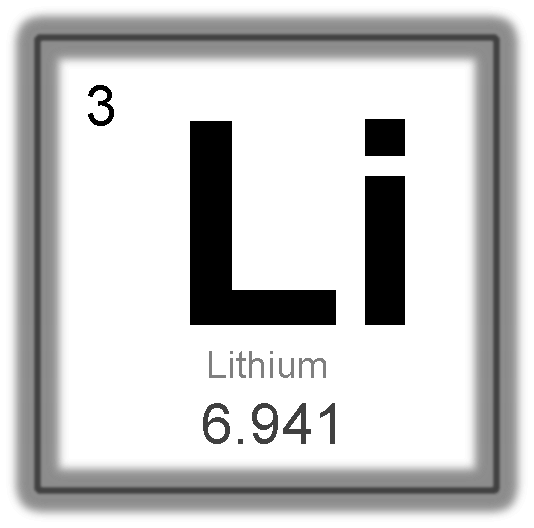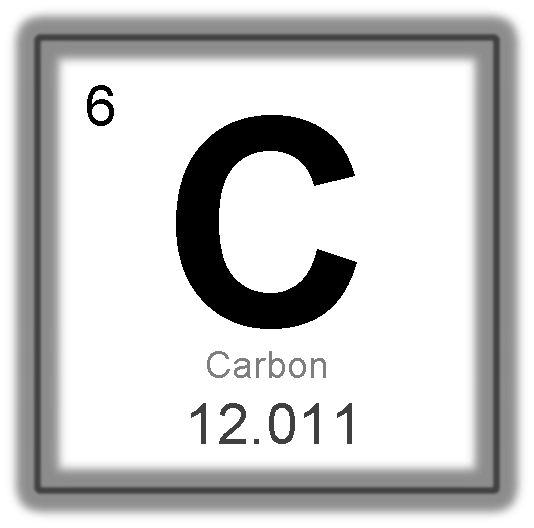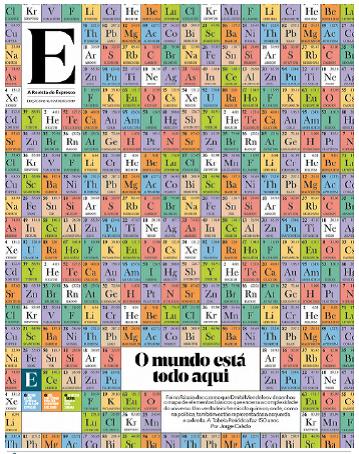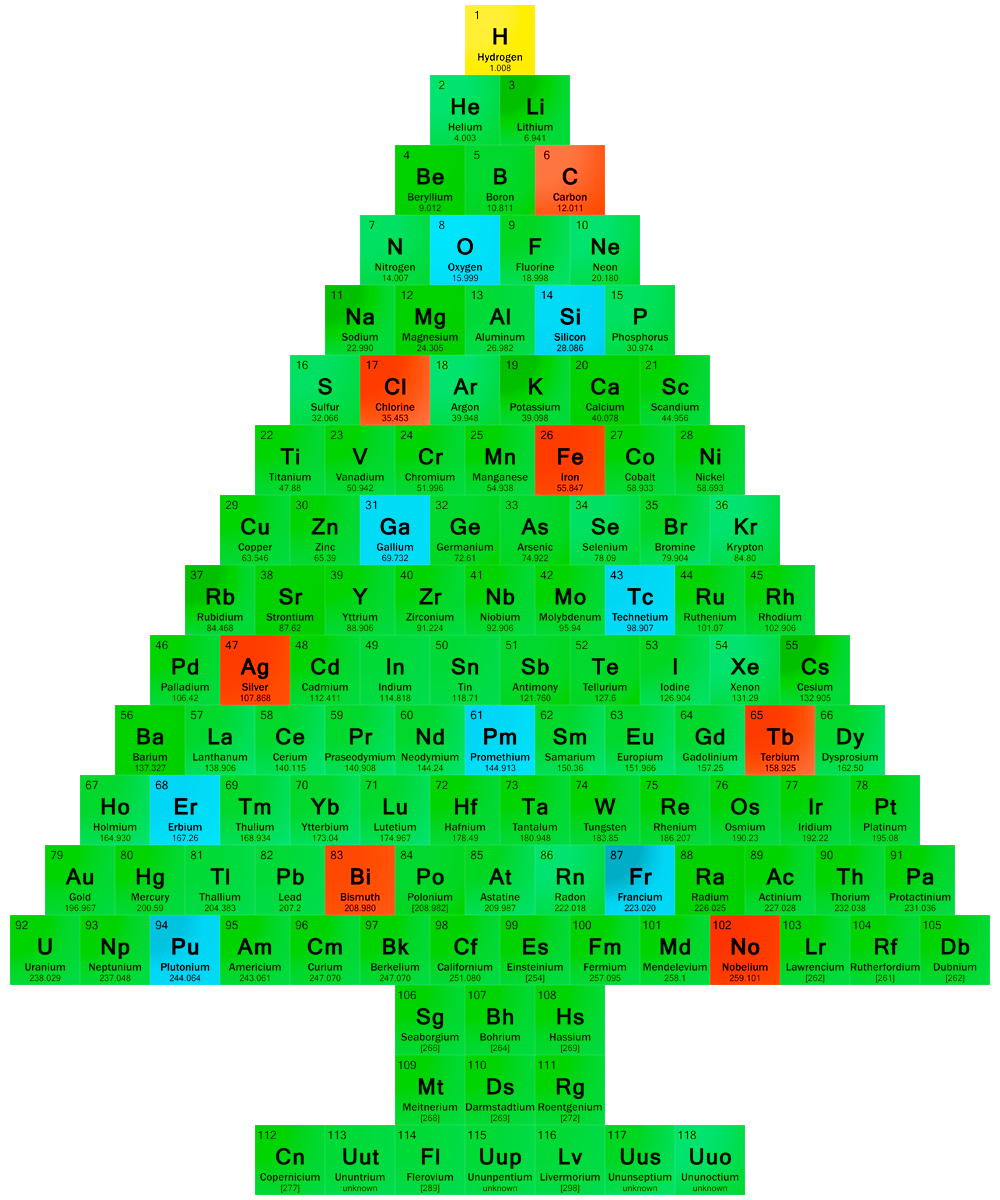Element of the Month

Hydrogen is the simplest element (atomic number 1) in the entire universe. Hydrogen is the true primordial substance, the first atom produced after the Big Bang. All chemical elements were formed from hydrogen by the processes of nuclear fusion. A major constituent of Biology associated with oxygen in the form of water.

Helium, named for the Greek Titan of the Sun, Helios, is an inert monatomic gas, being the first in the noble gas group in the Periodic Table. After hydrogen, helium is the second most abundant element in the observable universe. Its vast majority was formed during the Big Bang, but large amounts of new helium are continuously being created by nuclear fusion of hydrogen in stars.

Lithium is the lightest metal and solid element. Its transmutation to helium, in 1932, was the first fully man-made nuclear reaction. It has several industrial applications, including heat-resistant glass and ceramics, grease lubricants and batteries. Lithium is also present in biological systems in trace amounts; its salts have proven to be useful as a mood-stabilizing drug in the treatment of bipolar disorder in humans.

Beryllium is a steel-gray, strong, lightweight and brittle alkaline earth metal. It is a relatively rare element in the Universe and in Earth in present, e.g., in emeralds (as (Be3Al2(SiO3)6); the green color is due to trace amounts of chromium and sometimes vanadium). Beryllium is used in aerospace material for aircraft components, missiles, spacecraft, and satellites; it is also the most common window material for X-ray equipment and components of particle detectors. From the Biological point of view, inhaled beryllium-containing dusts can cause a chronic life-threatening allergic disease, called berylliosis.

Carbon is the 4th most abundant element in the universe. It is an essential element for Life on Earth, being only the15th most abundant element in the Earth's crust. The largest sources of inorganic carbon are limestones, dolomites and carbon dioxide, but significant quantities also occur in organic deposits of coal, peat and oil. Carbon forms a vast number of compounds, more than any other element, being often referred to as the "king of the elements". Three simple carbon compounds well recognised are graphite, one of the softest known substances, diamond, the hardest naturally occurring substance, and carbon dioxide, a relevant green-house effect gas, responsible for climate changes.

Nitrogen is the 7th most abundant element in the Universe and the 4th in living organisms (only behind hydrogen, oxygen and carbon), being used by all organisms for the biosynthesis of amino acids, nucleosides and other fundamental compounds. Life on Earth, thus, depends on the nitrogen biogeochemical cycle to keep this element in forms that can be used by living organism, by recycling it within the biosphere, soil, oceans and atmosphere (the largest nitrogen source). Nitrogen is also present in many industrially important compounds (such as ammonia, nitric acid, organic nitrates and cyanides) and this element is a component of materials as diverse as fertilisers, energy-stores, propellants, explosives, pharmacological drugs or superglue.
The name "nitrogène" was suggested by French chemist Jean-Antoine-Claude Chaptal in 1790, when it was found that nitrogen was present in nitric acid and nitrates. Antoine Lavoisier suggested instead the name azote, from the Greek ἀζωτικός , meaning"no life", as it is an asphyxiant gas, and this name is used in many languages, such as Portuguese, French, Russian, Romanian and Turkish, and appears in the English names of some nitrogen compounds such as hydrazine, azides and azo compounds.

Oxygen is one of the main constituents of the Earth's atmosphere, where it is continuously replenished by photosynthetic organism in the form of dioxygen. Conversely, dioxygen is consumed by the vast majority of living organism in cellular respiration, being the 3rd most abundant element in living organisms. Common uses of oxygen include production of steel, plastics and textiles, brazing, welding and cutting of steels and other metals, rocket propellant, oxygen therapy, and life support systems in aircraft, submarines, spaceflight and diving.

Fluorine is the lightest halogen and exists as a highly toxic pale yellow diatomic gas at standard conditions. As the most electronegative element, it is extremely reactive, as it reacts with almost all other elements, except for helium and neon.

Neon is a noble gas. It is a colorless, odorless, inert monatomic gas under standard conditions. It was discovered (along with krypton and xenon) in 1898 as one of the three residual rare inert elements remaining in dry air, after nitrogen, oxygen, argon and carbon dioxide were removed. Neon was the second of these three rare gases to be discovered and was immediately recognized as a new element from its bright red emission spectrum. The name neon is derived from the Greek word, νέον, neuter singular form of νέος (neos), meaning new. Neon is chemically inert, and no uncharged neon compounds are known. The compounds of neon currently known include ionic molecules, molecules held together by van der Waals forces and clathrates.

Magnesium is the 9th most abundant element in the universe and the 8th in the Earth's crust, being the 3rd most abundant element dissolved in seawater (only after sodium and chlorine). It is essential to all human cells, with hundreds of enzymes requiring magnesium ions to function; it also interacts with crucial polyphosphate-containing molecules, such as ATP, DNA, and RNA. Industrially, since it is less dense than aluminium, its alloy is prized for its combination of lightness and strength.





